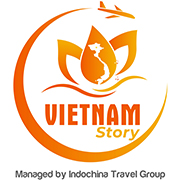Vietnam, a land renowned for its vibrant culture and bustling cities, also boasts a remarkable natural heritage. This treasure trove of biodiversity and stunning landscapes is meticulously preserved within its extensive network of national parks in Vietnam and nature reserves. These protected areas span the country, offering diverse ecosystems from the staggered rice terraces of the North, through the world’s largest caves and towering limestone karsts of Central Vietnam, down to the lush mangrove forests and unique wildlife of the South.
For Indian tourists seeking an escape from the urban sprawl, these parks provide unparalleled opportunities for adventure travel, ecotourism, and immersion in the tranquility of the natural world. This guide delves into seven of the most significant Vietnamese national parks, highlighting their unique characteristics, key activities like hiking and trekking, and practical insights, including the best time to visit, ensuring a memorable exploration of Vietnam’s wild heart.
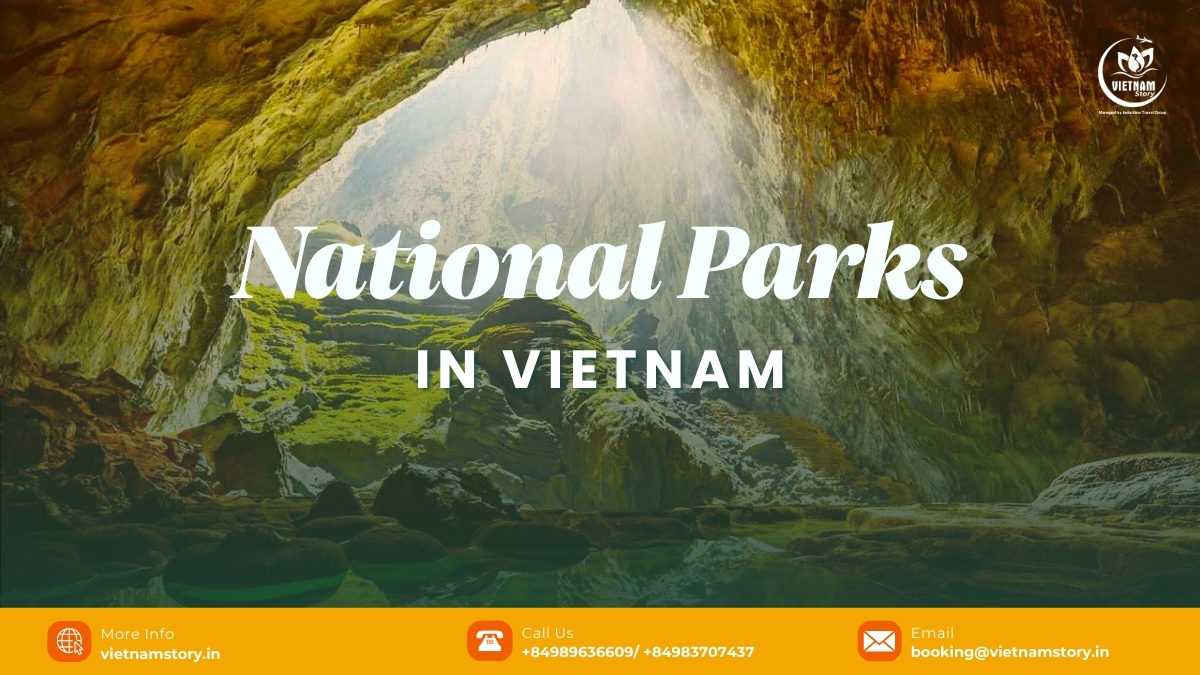
A Sanctuary for Nature: The Importance of National Parks in Vietnam
Vietnam’s national parks are far more than just scenic destinations; they are vital sanctuaries crucial for biodiversity conservation. These protected areas safeguard a wealth of flora and fauna, including numerous endangered species unique to the region, like the elusive White-headed Langur or various primate species.
They play a critical role in maintaining natural habitats, protecting diverse ecosystems, and promoting sustainable tourism practices. Beyond their ecological significance, many parks hold deep cultural importance for local ethnic minorities, such as the Tay or Muong people, whose lives and traditions are often intertwined with these landscapes. Offering invaluable opportunities for research, education, and recreation (including trekking, bird-watching, and wildlife spotting), these parks foster appreciation for the country’s natural heritage. For travelers, especially those from India seeking authentic experiences, these havens provide a chance to reconnect with nature and witness a captivating, restorative side of Vietnam.
7 Amazing National Parks in Vietnam You Shouldn’t Miss
1. Phong Nha-Ke Bang National Park: A UNESCO Subterranean Wonderland
Location: Quang Binh Province (Central Vietnam)
Phong Nha-Ke Bang National Park, a prestigious UNESCO World Heritage Site, stands as one of Vietnam’s most awe-inspiring natural treasures. Renowned globally for its colossal network of over 300 caves and grottoes embedded within dramatic limestone karsts, it offers an unparalleled adventure. This park is famously home to Son Doong Cave, the world’s largest known cave, presenting a subterranean world of staggering proportions. The landscape is a dramatic mix of towering jungle-topped karsts, underground rivers, and dense tropical forest, creating an environment of spectacular beauty and rich ecological diversity, perfect for adventure travel.
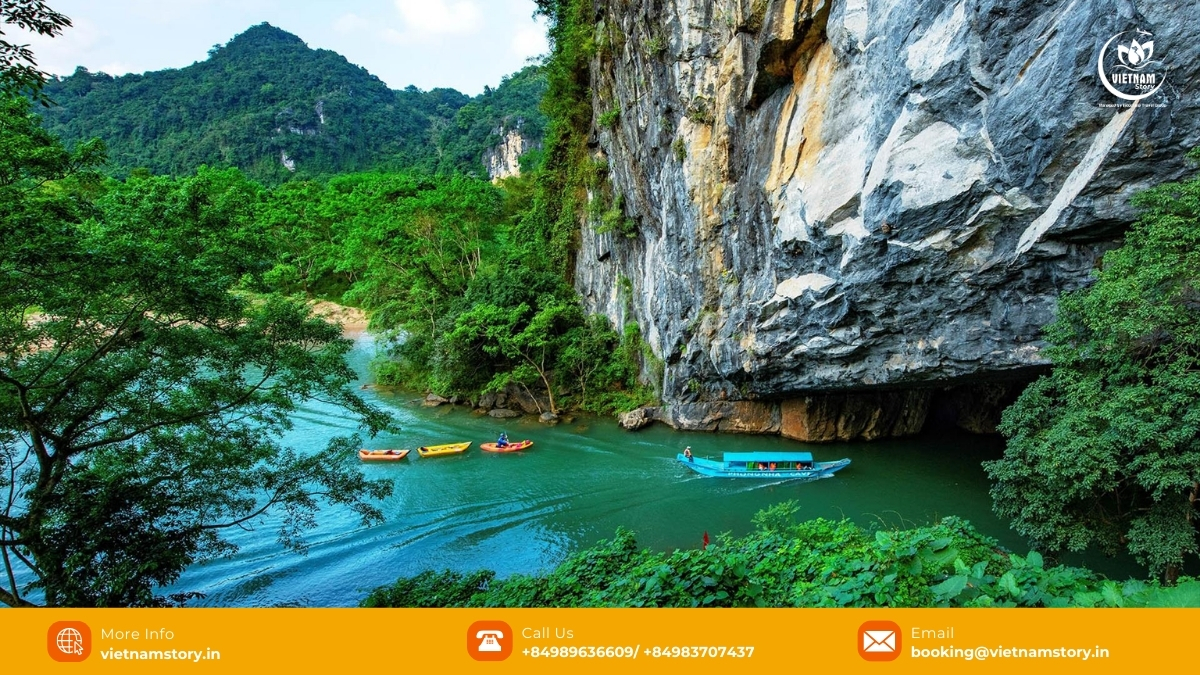
- Key Features & Unique Attributes: The park’s defining feature is its vast cave systems. Highlights include Son Doong Cave (requires specialized multi-day expeditions booked via operators like Oxalis Adventure), Phong Nha Cave (accessible via boat trip on an underground river), and Paradise Cave (Thien Duong), famed for its stunning stalactite and stalagmite formations. The park boasts exceptional geological value and significant biodiversity within its karst ecosystem.
- Activities: Offers thrilling caving experiences (from half-day tours to multi-day expeditions), jungle trekking, kayaking on the Chay River, cycling through Phong Nha town, and exploring the lush landscape. Guided tours are essential for most cave explorations.
- Best Time to Visit: The dry season, from March to August (especially March-April), is ideal. Conditions are perfect for trekking and caving, with minimal risk of flooding. The rainy season (October to November/December) often makes many caves inaccessible.
2. Cat Tien National Park: A Biodiversity Hotspot in Southern Vietnam
Location: Dong Nai, Lam Dong & Binh Phuoc Provinces (Southern Vietnam)
Cat Tien National Park is one of the largest and most significant protected areas in Southern Vietnam, roughly 3-4 hours from Ho Chi Minh City or Dalat. This expansive lowland tropical rainforest, encompassing rivers and wetlands like Bau Sau (Crocodile Lake), is a crucial biodiversity hotspot. It offers sanctuary to an astonishing array of plant and animal species, including numerous endangered species, making it a prime destination for wildlife spotting and ecotourism.
- Key Features & Unique Attributes: Diverse ecosystems including evergreen rainforest, wetlands, and bamboo forests. It’s home to primates (gibbons, langurs), deer, wild boar, numerous bird species (over 350), reptiles, and even bears and crocodiles. A unique offering is the night safari, providing chances to see nocturnal creatures. The Dao Tien Endangered Primate Species Centre is also located here.
- Activities: Excellent for jungle trekking (ranging from easy walks to multi-day hikes), bird-watching, wildlife viewing (especially early morning/late afternoon), cycling, kayaking, and guided night safaris. Visiting Bau Sau wetlands often involves a trek and boat trip.
- Best Time to Visit: The dry season, from December to May/July, is optimal. Trails are more accessible, and wildlife viewing can be easier. The rainy season (roughly June to November) brings heavy rain, muddy trails, and potential flooding.
3. Cuc Phuong National Park: Vietnam’s Oldest Park & Conservation Hub
Location: Ninh Binh Province (Northern Vietnam)
Established in 1962 and consecrated by Ho Chi Minh himself, Cuc Phuong is Vietnam’s oldest national park. Located just two hours from Hanoi, it’s famed for its dense ancient forests containing millennia-old trees, rich biodiversity, prehistoric caves, and significant conservation efforts. It serves as a crucial center for research and protection, particularly for primates and turtles, making it a highlight among national parks in Vietnam for conservation enthusiasts.
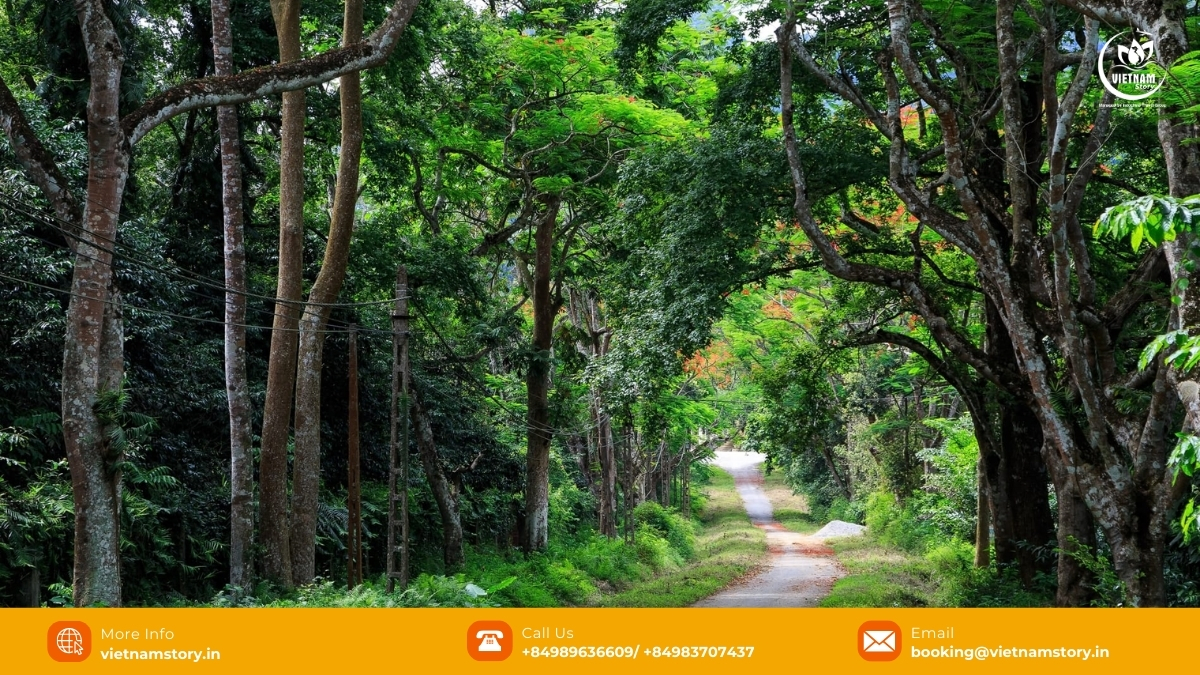
- Key Features & Unique Attributes: Ancient limestone karst forest landscape. Houses the highly respected Endangered Primate Rescue Centre (EPRC), rehabilitating various langur and gibbon species, and the Turtle Conservation Centre (TCC). Features prehistoric human caves and giant ancient trees. Hosts a spectacular butterfly season. Interaction with the local Muong people is possible via homestays.
- Activities: Offers excellent hiking and trekking trails, bird-watching, cycling, kayaking, cave exploration, and insightful visits to the conservation centers. Staying overnight in Muong stilt houses provides a cultural experience.
- Best Time to Visit: Generally good year-round, but the dry season (December to May) is preferred. The unique butterfly season peaks in April and May (though temperatures rise). Winter (Dec-Jan) can be chilly.
4. Ba Be National Park: Serene Lakes and Ethnic Culture
Location: Bac Kan Province (Northeastern Vietnam)
Centered around Ba Be Lake, Vietnam’s largest natural freshwater lake, this park offers a stunning combination of serene waterscapes, towering limestone mountains, lush forests, and vibrant ethnic culture. Located about six hours from Hanoi, Ba Be National Park is a haven of tranquility, dotted with waterfalls, caves, and villages inhabited primarily by the Tay ethnic group.
- Key Features & Unique Attributes: The three interconnected sections of Ba Be Lake are the heart of the park. Features include Puong Cave (with thousands of bats), Dau Dang Waterfall, and Hua Ma Cave. The park provides critical habitat for various fish, birds, and some mammals. The unique cultural element comes from the lakeside villages of the Tay people, offering authentic homestay experiences in traditional stilt houses.
- Activities: Boat trips on the lake are essential for exploring caves and waterfalls. Kayaking, swimming, fishing, hiking and cycling around the lake are popular. Visiting Tay villages and experiencing a homestay offers cultural immersion.
- Best Time to Visit: The dry season (November to April) offers pleasant weather and calmer lake conditions. Occasional storms can occur from July to October. Winters can be cool and dry.
5. Bach Ma National Park: Mountain Retreat Between Hue and Hoi An
Location: Thua Thien Hue Province (Central Vietnam)
Perched in the Annamite Mountains halfway between the historic cities of Hue and Hoi An/Danang, Bach Ma National Park is a mountainous haven known for its cool climate, rich biodiversity, stunning waterfalls, and panoramic coastal views. Relatively less visited, it retains a sense of tranquility and features remnants of its past as a French colonial hill station, with some villas converted into guesthouses – among Vietnam’s national parks.
- Key Features & Unique Attributes: High elevation provides cooler temperatures. Diverse forest ecosystems harbor species like the red-shanked douc langur. Features numerous waterfalls (like Ngu Ho Lakes and Do Quyen Waterfall) and hiking trails. Offers spectacular sunrise views over the coast from its peak on clear days. The presence of restored French colonial villas adds a unique historical touch.
- Activities: Primarily hiking and trekking along well-maintained trails leading to viewpoints and waterfalls. Bird-watching is excellent due to the diverse habitats. Relaxing in the cool mountain air.
- Best Time to Visit: The dry season, from March to September, is most pleasant. The mountain elevation keeps temperatures moderate even during summer. Avoid the rainy season (October to January/February) due to heavy rain and slippery trails.
READ MORE: Discovering paradise: A guide to the beautiful islands in Vietnam
6. Pu Luong Nature Reserve: Terraced Valleys and Ethnic Villages
Location: Thanh Hoa Province (Northern Vietnam)
While technically a Nature Reserve, Pu Luong warrants inclusion for its stunning representation of Northern Vietnam’s landscapes – a captivating blend often described as a “microcosm” combining Sapa’s mountains, Mu Cang Chai’s rice terraces, and Mai Chau’s cultural charm. Scenic roads wind through valleys dominated by breathtaking terraced rice fields cascading down hillsides, interspersed with traditional villages of the Thai and Muong ethnic groups.
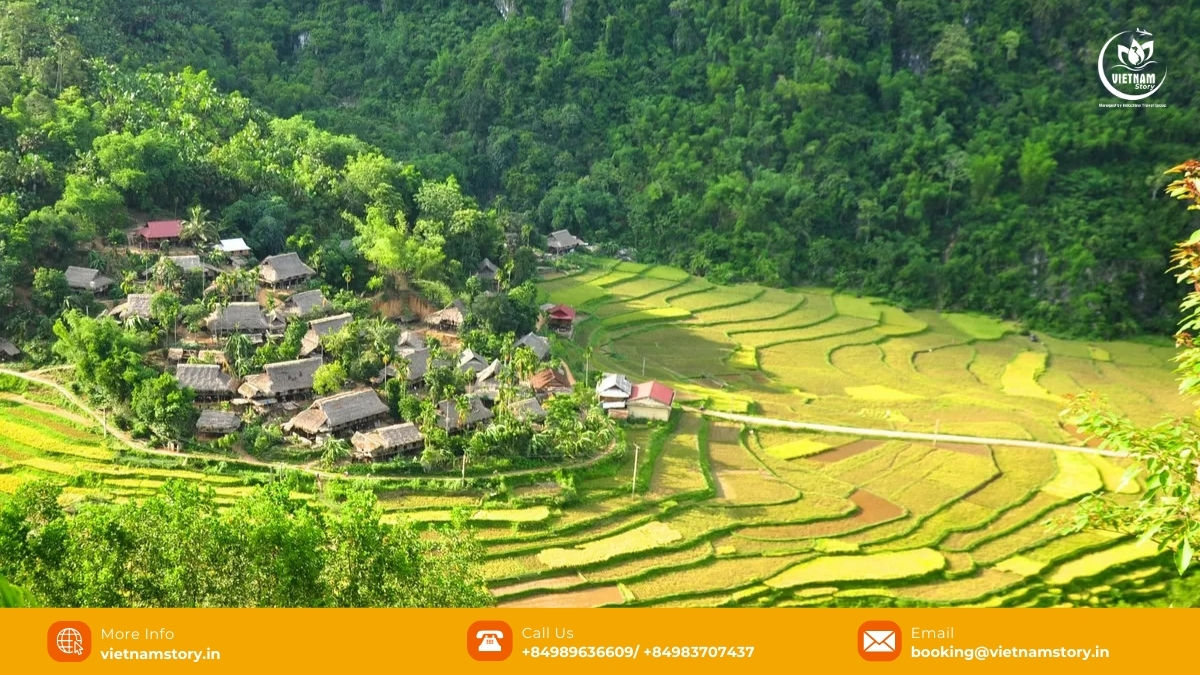
- Key Features & Unique Attributes: Iconic tiered rice terraces that change colour with the seasons. Picturesque traditional stilt house villages (like Ban Hieu, Ban Don, Kho Muong). Water wheels along streams, waterfalls, and natural pools for cooling off. Offers panoramic views from mountain passes.
- Activities: Excellent for hiking and trekking through rice paddies and villages. Cycling and motorbiking along scenic routes. Experiencing rural Vietnamese life and staying in local homestays. Swimming in natural rock pools.
- Best Time to Visit: The rice harvest seasons offer the most spectacular views: late May to early June (green terraces) and especially September to early October (golden yellow terraces). Avoid the main rainy months (July-August) and potential cold spells (Dec-Feb).
7. Cat Ba National Park: Island Ecology and Primate Sanctuary
Location: Cat Ba Island, Hai Phong City (Northern Vietnam – part of Lan Ha Bay/Ha Long Bay archipelago)
Situated on the largest island in the Ha Long Bay archipelago (specifically within Lan Ha Bay), Cat Ba National Park offers a unique blend of rugged karst landscapes, dense tropical forests, mangrove swamps, and coastal ecosystems. It’s a critical sanctuary for the highly endangered golden-headed (Cat Ba) langur, one of the rarest primates globally, making its conservation efforts a unique characteristic.
- Key Features & Unique Attributes: Diverse habitats on a large island within the famous Gulf of Tonkin karst seascape. Home to the critically endangered Cat Ba Langur. Features numerous hiking trails (like the challenging trek to Viet Hai village), caves (like Trung Trang Cave), and viewpoints (Ngu Lam Peak). Mix of terrestrial and marine ecosystems.
- Activities: Hiking and trekking through the forested karsts. Rock climbing opportunities. Kayaking and swimming in adjacent Lan Ha Bay. Wildlife and bird watching. Visiting Viet Hai village. Relaxing on nearby beaches.
- Best Time to Visit: Autumn (September to November) offers comfortable temperatures and less haze. Spring (March-May) is also pleasant. Summer (June-August) is hot and humid but good for beach activities, though typhoons are possible. Winter can be cool and misty.
Planning Your Visits to National Parks in Vietnam: Practical Considerations
Effectively planning your trip is key to enjoying the national parks in Vietnam. Here are some practical points:
- Permits and Entrance Fees: Most parks require an entrance fee (typically ranging from $1-5 USD per person). Some specific activities or areas (like certain caves in Phong Nha) may require additional permits or specialized tour bookings. Always check the latest official information before arrival.
- Guided Tours vs. Independent Travel: For challenging treks, remote areas, or specialized activities like deep caving or wildlife spotting, booking guided tours (available through park offices or local operators like Oxalis Adventure or Jungle Boss in Phong Nha) is highly recommended and sometimes mandatory. Guides enhance safety and provide valuable insights into the local ecology and culture. Simpler trails in parks like Cuc Phuong or Bach Ma can often be explored independently.
- Accommodation Options: Choices vary significantly between parks. Options range from basic campsites and park-run guesthouses (Cuc Phuong, Bach Ma, Cat Tien) to charming local homestays in ethnic villages (Ba Be, Pu Luong) or hotels and resorts in nearby towns (Phong Nha town, Cat Ba town). Booking accommodation in advance is advisable, especially during peak seasons.
- Transportation: Access varies. Parks near major cities like Cuc Phuong (near Hanoi/Ninh Binh) or Bach Ma (near Hue/Danang) are relatively easy to reach by bus, private car, or motorbike. More remote parks like Ba Be or Cat Tien might require longer bus journeys or specific tour arrangements. Consider transportation time when planning your itinerary.
Tips for Indian Tourists: A Safe and Sustainable Journey
To ensure a safe, enjoyable, and responsible visit to Vietnam’s natural wonders:
- Check the Weather: Vietnam’s weather varies significantly by region and season. Pack accordingly (rain gear during wet seasons, warm layers for mountains/winter) and check forecasts close to your travel dates.
- Assess Fitness Levels: Be realistic about your physical condition when choosing hiking trails or activities. Start with easier trails if unsure. Some treks, especially multi-day ones, require good fitness.
- Pack Appropriate Gear: Sturdy walking shoes/hiking boots are essential. Bring comfortable, breathable clothing, sun protection (hat, sunscreen), insect repellent (especially for forests/wetlands), a basic first-aid kit, and sufficient water.
- Wildlife Awareness: Observe wildlife from a safe distance. Never feed wild animals. Be aware of insects, leeches (especially in rainy seasons), and snakes in forest areas. Follow guides’ instructions carefully.
- Respect Local Culture: When visiting villages or interacting with ethnic minorities, dress modestly, ask permission before taking photos of people, and be respectful of local customs and traditions. Learning a few basic Vietnamese phrases can be appreciated.
- Stay Hydrated & Food Safety: Drink bottled or purified water. Be mindful of street food hygiene, especially in more remote areas.
- Environmental Responsibility: Stick to marked trails, do not litter, avoid picking plants or disturbing wildlife, and support eco-friendly tour operators and accommodations where possible.
Conclusion: Embrace Vietnam’s Wild Side
Vietnam’s national parks and nature reserves offer an extraordinary journey into the country’s vibrant natural heritage and ecological richness. From the subterranean marvels of Phong Nha-Ke Bang and the ancient forests of Cuc Phuong to the serene waters of Ba Be Lake and the terraced landscapes of Pu Luong, these protected areas provide invaluable sanctuaries for wildlife and diverse ecosystems. For Indian tourists seeking adventure, tranquility, or a deeper connection with nature, exploring these Vietnamese national parks promises unforgettable experiences. By planning carefully, choosing activities suited to your interests and fitness, respecting the environment and local cultures, you can fully immerse yourself in the breathtaking beauty and wonder that define the wild heart of Vietnam. Consider incorporating visits to these parks into your Vietnam tour package for a truly enriching travel experience.
